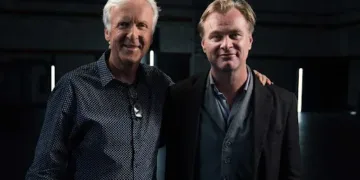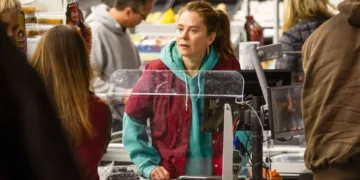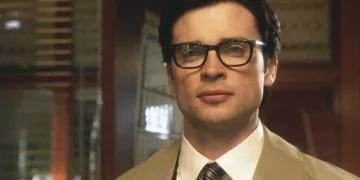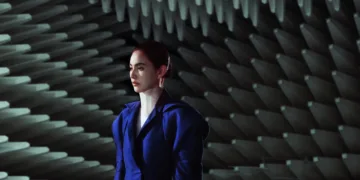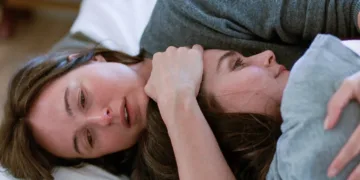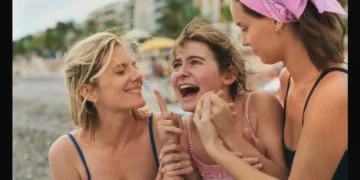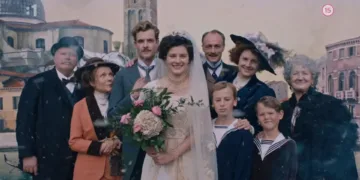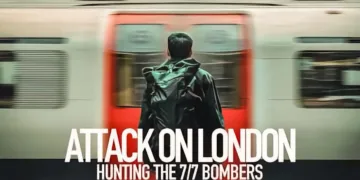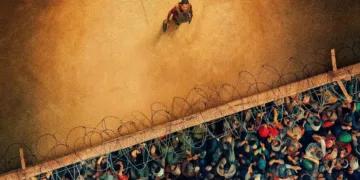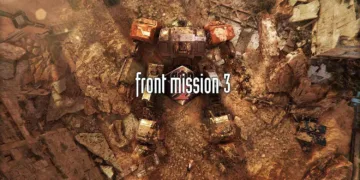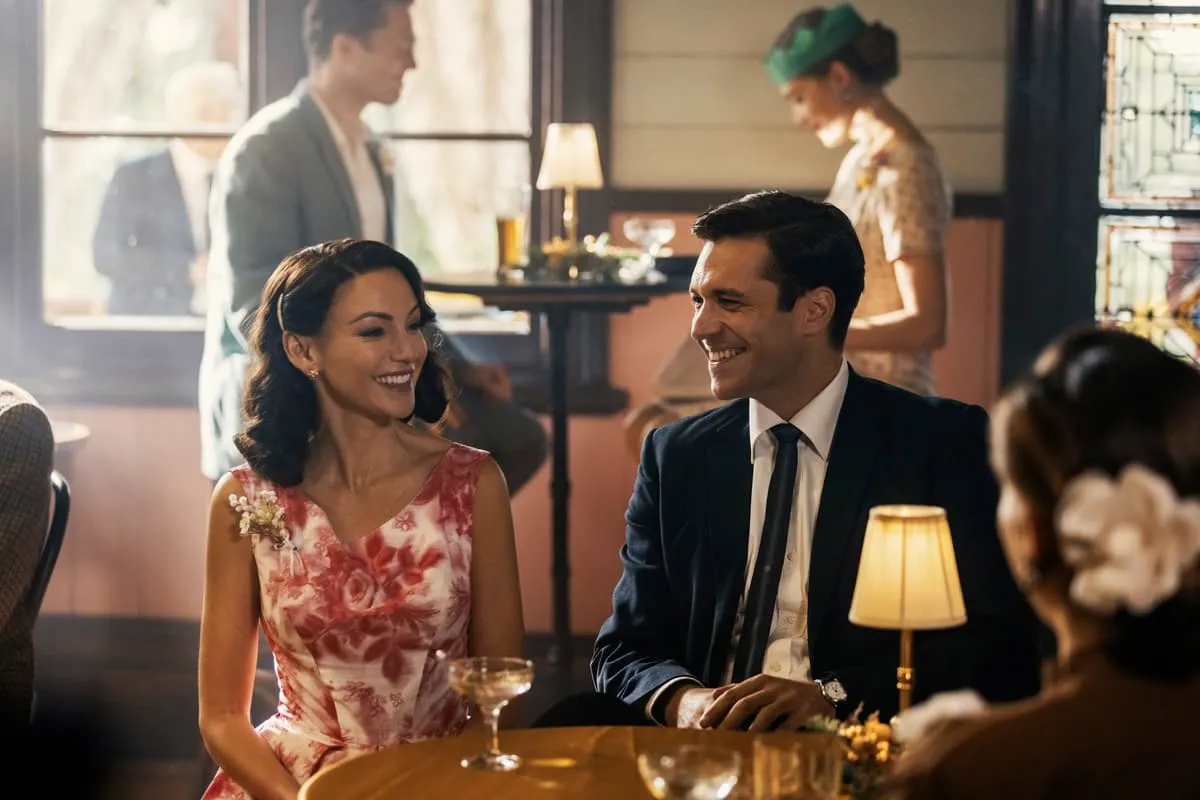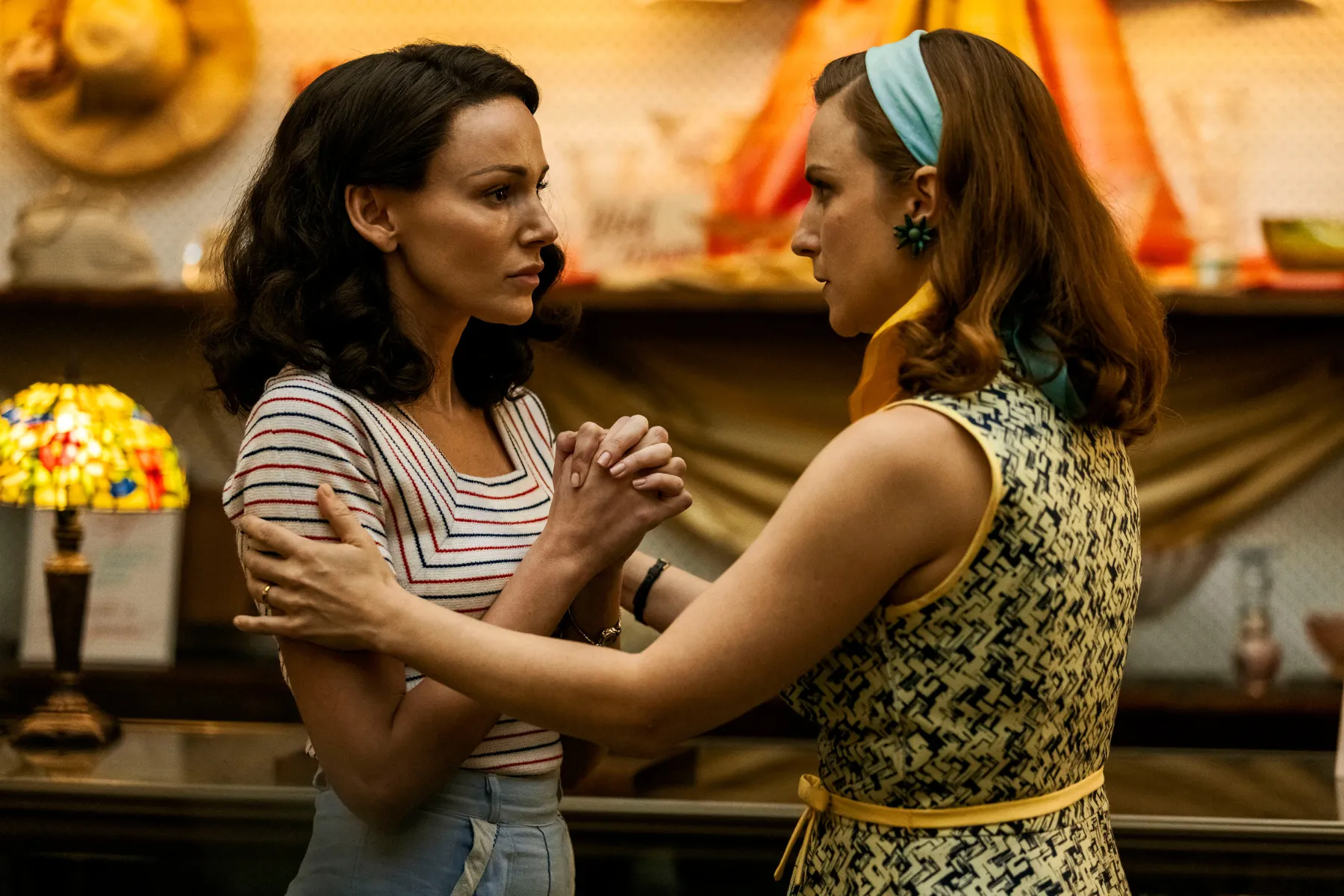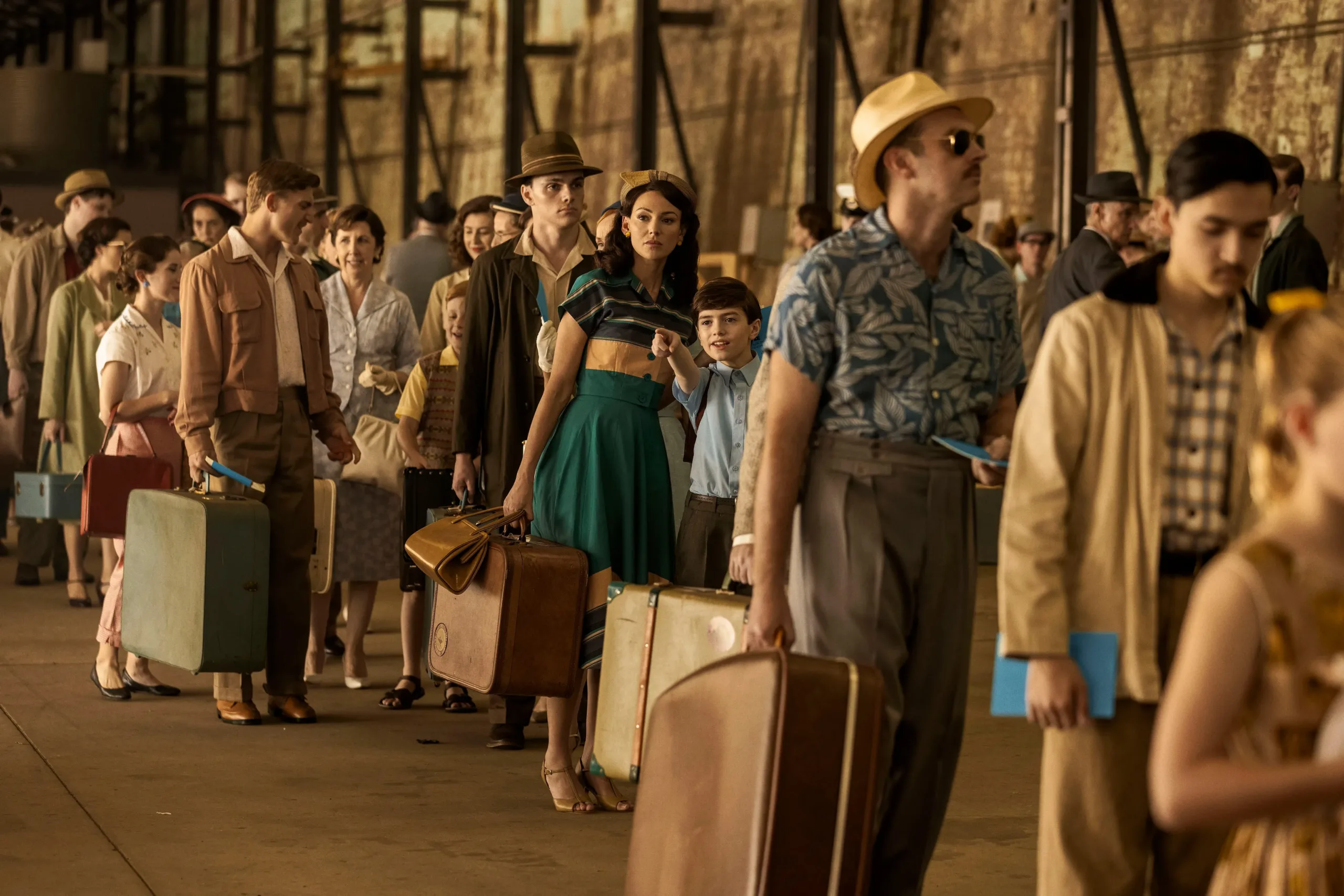In a world scarred by recent conflict, the series paints a somber canvas where hopeful Britons, weighed down by memories of loss and deprivation, cross vast oceans to encounter an unanticipated desolation. A group of migrants, driven by dreams of renewal in an unfamiliar land, find themselves confronting a reality steeped in hardship and unfulfilled promises.
Post-war Britain, marked by lingering despair and economic hardship, serves as a stark reminder of lives left in fragments. The state’s offering—a passage for a pittance—carries with it a seductive promise of transformation, yet the truth reveals itself in the stark, unyielding environs of 1950s Australia.
Here, the sterile optimism of promotional visions clashes with the gritty, raw existence experienced by those newly arrived. The series casts these migrants against a backdrop of makeshift shelters and brittle hope, where each character’s step echoes the philosophical inquiry into the nature of human resilience.
In their struggle, there is an undercurrent of introspection about the cost of chasing an ideal and the existential weight borne by those who venture far from home. The narrative refuses to shy away from the dark silence that follows shattered expectations, inviting viewers to contemplate the intricate interplay of ambition and despair.
A Voyage Through Uncertain Tides
The narrative unfolds with the stark realism of a crossing both geographical and existential. It opens in Southampton, where a group of hopeful souls, worn by loss and the lingering scars of war, set forth toward Sydney.
This odyssey is depicted as an arduous escape, a desperate search for a promised solace that proves evasive at every turn. The characters bear the weight of unmet desires, and one feels the pulse of each step as they confront unforeseen hardship and relentless despair.
Kate’s quest to reclaim the son who was once taken from her offers an emotional fulcrum amid the mass of intertwined lives. Her determination stands as a quiet defiance against a fate that appears preordained by forces far beyond her control.
Intersecting with her narrative are the domestic trials of Terry and Annie, whose lives unravel amid the daily struggles of survival. Their personal battles—echoing a clash between human frailty and the indifference of circumstance—intersect with the stark realities of housing exploitation and the oppressive management within makeshift migrant hostels.
The series employs rapid shifts and quieter interludes, a dance between moments of raw intensity and reflective pauses that allow the viewer to linger on the inner torment of the characters.
Montage sequences fragment the narrative into fleeting impressions, offering brief windows into the turbulent emotional landscapes that define these lives. There is a palpable tension in the way the storyline weaves together the many threads of individual loss, societal neglect, and the inherent cruelty of shattered hopes.
Cliffhangers punctuate the unfolding drama, heightening the sense of inevitable tragedy while leaving gaps that invite personal reflection. The narrative unfurls with a careful orchestration of dramatic irony and unexpected reversals. Even as key moments of resolution appear, the series resists a tidy wrap, preferring instead to linger in the uncertain, raw, and often painful realities of human endeavor.
Fragments of the Self
Kate emerges as a figure of quiet resilience, her history marked by the rigors of caring and the anguish of separation. Once a nurse burdened by personal loss, she now strides through the narrative as one who seeks to mend a fractured past.
Her confrontation with the past is as painful as it is necessary; each step toward reclaiming what was torn away resonates with a deep-seated need to defy a system that has long imposed its own cruelty. In moments when her eyes mirror the quiet torment of isolation, one senses the raw, unspoken questions of existence: what is the price of hope, and how does one mend a soul torn asunder?
Terry, a man bearing the scars of war, confronts his inner dissonance with a complex mixture of regret and reluctant redemption. His life, marred by battles both external and internal, reflects a persistent tension between his desire to act rightly and the shadows of a past that clings tightly.
His decisions, whether marred by hesitation or a sudden surge of resolve, expose the fragile interplay of moral duty and human frailty. One observes in his struggle a silent inquiry into the essence of guilt and forgiveness, challenging the viewer to ponder the cost of past transgressions on a life already steeped in sorrow.
Annie, anchored by the roles imposed by society, wrestles with the weight of expectation and the subtle stirrings of newfound possibility. Her character, forged in the crucible of domestic turmoil, offers glimpses of a quiet rebellion—a soft, persistent questioning of norms that have long defined her.
The secondary figures, whether they embody cruelty or fleeting kindness, paint a broader picture of an environment where every interaction is a microcosm of the larger human condition.
The cast’s performances are marked by an authenticity that stirs the mind and heart alike. In moments of hushed confrontation or fleeting tenderness, the actors present layers of emotion that invite the audience to question the true nature of redemption and loss.
The Weight of Exile and Expectation
A spectral promise of a sunlit future is betrayed by a harsh, unyielding present. The series paints a portrait of those who crossed oceans under the allure of a promised new world, only to confront a reality steeped in hardship.
Migrants set their eyes on a vision of abundance and warmth, a light at the end of a long, arduous tunnel; yet the canvas of 1950s Australia proves unkind, marked by bleak housing and a social order that shuns rather than welcomes.
The show examines a stark imbalance where those who sought refuge and hope become prey to a system steeped in exploitation. Authorities and local figures, enmeshed in their own survival, exact a toll from these vulnerable souls, laying bare a hierarchy that leaves the hopeful few to suffer in silence.
The treatment of these newcomers, ignored and at times mistreated, poses a persistent query about the nature of fairness in a world structured by disparity.
Women in this narrative, embodied by figures such as Kate and Annie, endure the weight of expectations cast by societal norms. Their struggles—against forced separations, constrained roles, and relentless judgment—offer a glimpse into a life of isolation amidst a sea of indifference.
Their personal battles mirror the silent strife of countless others, questioning if any refuge exists when cultural dislocation and economic exploitation tighten their grip.
Meanwhile, the series casts a critical eye on the stark divisions that separate those clinging to vestiges of an old society from those who dream of a fresh start. The interaction between entrenched values and the raw ambition of immigrants invites a meditation on the human cost of survival.
Each scene, charged with ethical uncertainty and the weight of systemic corruption, calls into question the moral price exacted on those caught between despair and defiant hope.
The Chiaroscuro of Craft
Every frame seems to be an homage to a time that existed in stark contrasts. The set design, costumes, and props create an immersive recreation of the 1950s, each detail resonating with a quiet intensity.
There is a sense of authenticity in the rugged textures of the migrant hostels and the modest interiors that capture the spirit of an era marred by austerity. The careful arrangement of every object and fabric evokes an atmosphere where the past is both tender and unforgiving.
Light and shadow perform a delicate dance across the screen, casting the gritty reality of post-war life in a language of chiaroscuro. The interplay of subdued hues and piercing highlights captures fleeting moments of despair and fleeting sparks of hope.
The camera, with its unconventional angles and deliberate movements, often lingers on the silence between dialogue and the unspoken weight of each character’s burden. Montage sequences intersperse the narrative with sudden bursts of imagery that mirror the internal turbulence of souls left adrift in a harsh new world.
Ana Kokkinos directs with a measured intensity, her vision evident in every slow pan and abrupt cut. Certain scenes stand out for their stark portrayal of emotional conflict—a look exchanged between characters or a solitary figure silhouetted against a fading skyline.
The musical score, drawn from the era’s repertoire, punctuates these moments with melancholic strains that deepen the viewer’s immersion into the period. Editing is deliberate, ensuring that transitions between moments of tension and introspection feel both seamless and stirring.
The overall production quality offers a window into the past that is as meticulously crafted as it is evocative, inviting an unspoken reflection on the relentless passage of time and memory.
The Architecture of Disquiet
The series arranges its narrative with a precision that oscillates between abrupt bursts of emotion and measured, reflective pauses. Its structure is built upon episodes that contribute individual fragments, each a vignette of sorrow or hope, yet collectively forming a mosaic of human strife.
The pacing does not surrender to constant momentum; instead, it oscillates, offering moments where the viewer is compelled to absorb each subtle shift in tone—a quiet interval punctuating the relentless advance of conflict.
The dialogue unfolds with a raw candor, where each spoken line carries the weight of history and personal regret. Characters speak in cadences that recall whispered confessions and fervent outbursts, their words exposing the fissures of a society in disrepair.
Their monologues and terse exchanges seem to mirror the unspoken questions of existence, prompting reflections on the inevitability of pain and the often uncertain nature of hope.
Multiple storylines coexist within this framework, their intersections marked by abrupt intersections of fate and deliberate pauses. The narrative manages the complexity of these intertwined paths by allowing each to emerge briefly into focus before receding into the dim background of a shared struggle.
Symbols of decay and resilience appear in recurring images—a lone street lamp, a rain-soaked window, a hesitant glance—that spark introspection even in the midst of unfolding drama.
Techniques of foreshadowing and irony punctuate the script, offering subtle hints at what lies ahead while casting shadows on what has been. The layered storytelling draws the viewer into an environment where personal dilemmas and historical realities intermingle, inviting a reflection on the nature of human suffering and the uncertain measure of redemption.
The Review
Ten Pound Poms Season 2
Ten Pound Poms Season 2 casts a stark light on human resilience amid harsh realities. Its atmospheric production, layered narrative, and emotionally charged performances provoke deep, existential reflection. The series challenges the viewer with moments of faltering pace but ultimately leaves a lingering imprint on the conscience.
PROS
- Atmospheric production design
- Rich narrative depth
CONS
- Occasional pacing issues
- Complexity that may challenge some viewers














